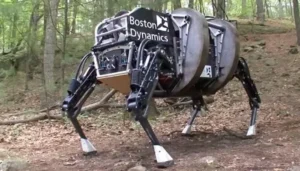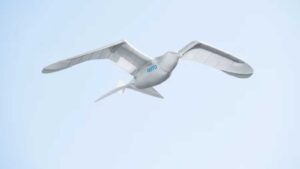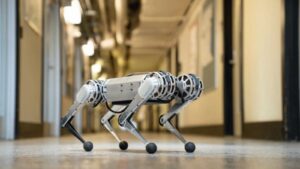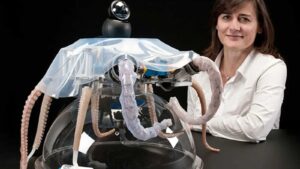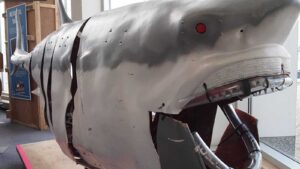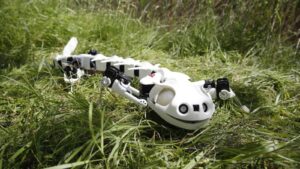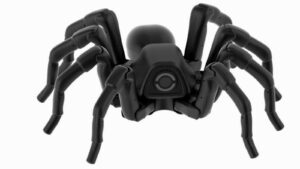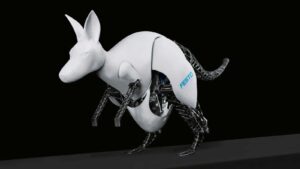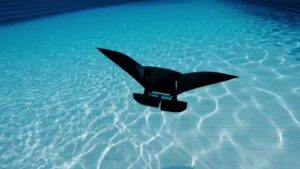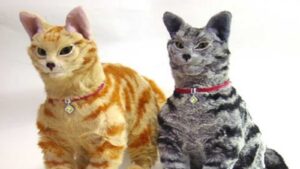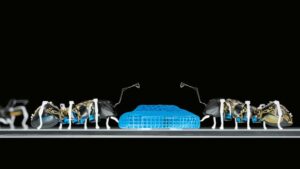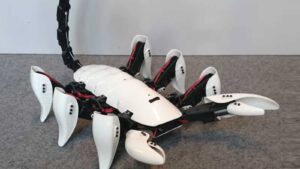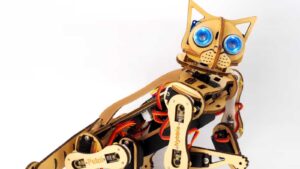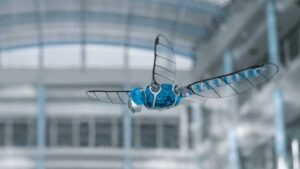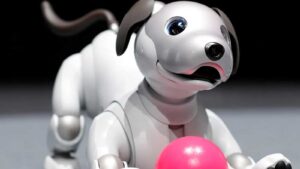Amazing robot animals that will blow your mind
Summary
Top 20 amazing robot animals that will blow your mind. Millions of years of evolution have allowed animals to develop some elegant and highly efficient solutions to problems like locomotion, flight, and dexterity. Specifically, developers try to give their products […]

Top 20 amazing robot animals that will blow your mind. Millions of years of evolution have allowed animals to develop some elegant and highly efficient solutions to problems like locomotion, flight, and dexterity. Specifically, developers try to give their products the appropriate appearance and give robots all the advantages of the representatives of fauna. Let’s look at the top 20 amazing robot animals that will blow your mind.
Video: Amazing robot animals that will blow your mind
Big Dog Robot
The first robot on our list embodies the dreams of the American infantrymen. This assistant, created precisely for these strong guys, literally carries all the weight that previously had to drag the soldiers themselves. To be honest, it does not really remind you of a dog. However, it can still follow a person even with a load of up to 500 kg. This dog can reach speeds up to 25 km/h. The development and improvement of this robot are still in progress, but soon the US army will add four-legged soldiers.
Video: Amazing robot animals that will blow your mind
Robot Fish
First, that can be said is that this particular robot came out very beautiful. It turned out so impressive because, with the next-level inventions, it completely imitates all the habits and movements of fish and can easily be confused with the real one. Today, several dozen of these robotic fish are in different sizes and various breeds. Their applications are mainly limited to one: entertainment. Aquariums filled with such mechanical fish can be more than impressive.
Robot Bird
Back in 2011, the world saw the first robot bird. The scenery is extraordinary because the robot imitating Albatross moves, floats, and flies precisely like its feathered prototype. Today there are more than 20 such robots, and each of them is unique. Some of them rise to a height of 1 km. At this altitude, they are absolutely indistinguishable from real birds. How strange is it that the military hasn’t created such a drone for itself so far?
Robot Snake
Of course, not all robot things that actually exist have a purely military purpose. For example, the snake robot may seem scary at first. Its tasks are more than noble—it seeks and saves people in places where no one can get in. For example, under the rubble after earthquakes or mine accidents. All experts agree on one thing: such a lifeguard in the future will be more than in demand worldwide.
Robot Cheetah
As you know, the world-famous runner Usain Bolt is capable of overtaking a real cheetah. But a cheetah robot can easily catch up with and outrun them both. With the fastest predator, the robot has little in common but speed. It is capable of reaching 45 km/h, which is a lot. Engineers are still working to give the robot the proper appearance and plan to speed up their mechanical runner.
Robot octopus
One of the most exciting amazing robots that really exist is octopus. It was created for deep-sea exploration and today is used for its intended purpose. Silicone tentacles are driven by electric motors and accelerate the octopus to 20 cm/sec. The robot is equipped with a camera and recording equipment. The item has passed sea baptism, helping to study its real, live octopus brothers.
Robot Shark
After the creation of the robot, the fish baton was taken by military engineers and scientists, who created a robot, imitating the most ferocious marine predator. The sample of this swimming robot shark presented to the public has a length of only 1.5 meters, but it still makes a striking impression. Oddly enough, scientists said they tried to make a copy of the tuna but ended up with the shark. It is quite easy to understand how and for what the robot will be used. It can sink to 400 meters, which is not the limit since the works are still in progress.
Robot Salamander
The only modern robot capable of moving both in water and on land. The robot’s lightweight plastic body allows it to float freely, simulating a reptile movement, while on the ground, it can be moved using particular, curved legs. The speed is low, but the passage on complex surfaces is excellent. Interesting fact. The creators of this robot want to get a new type of amphibian transport eventually.
Robot Spider T8
Not an animal, of course, but we couldn’t mention it. A spider robot skeleton is printed on a 3D printer. T8 is one of the most shocking and amazing robots that really exist. It has several kits, including a realistic coating.
The robot uses 26 servo gears and a simple advanced control system. This robot costs $1385, but the version without the skin can be purchased for $250.
Robot jellyfish
One of the most beautiful and harmonious robot animals that actually exists is this his jellyfish. It is very much like a real jellyfish, maybe a little mechanized… It can be used in many areas, from pure entertainment in the aquarium to working as an underwater radio anchor in the open sea, leading ships and planes. Jellyfish can both swim at a reasonable speed and hang in one place, while even a strong flow will not interfere with it.
BionicKangaroo Robot
The German company Festo developers created a robotic seven-kilogram copy of a kangaroo that can move exactly like a real animal. BionicKangaroo can jump up to 40 cm high and 80 cm long.
Scientists have achieved a major breakthrough: the robot’s motor system returns the energy spent on the jump and uses it to make a new jump. This saves significant resources and can be used for new inventions and discoveries. The kangaroo robot can only jump and position itself more as a robot than a mass-produced toy, but things can change in the future. Having a kangaroo at home isn’t a tempting idea?
MantaRay Robot
Researchers from the National University of Singapore (NUS) have created MantaDroid, an aquatic robot that emulates the swimming locomotion of manta rays. The robotic manta ray, which swims at the speed of twice its body length per second and can operate for up to 10 hours, could potentially be employed for underwater surveillance in the future.
MantaDroid was designed and optimized over two years after an in-depth study of fluid dynamics and multiple experiments, which included testing of 40 different fin designs. The fins that were eventually installed on the robot are a pair of flexible pectoral fins made using PVC sheets. The fins achieved good maneuverability and swimming capability when tested in the pool.
Read More: Athletes who got caught cheating on camera
The NecoRo robot
Like other new technology developments in the Land of the Rising Sun, Japanese robotic animals are of high quality and extensive functionality. NeCoRo is covered with soft wool and looks like a live pet, both in appearance and behavior. Robocat will favorably purr when scratching the ears and stroking the back, as well as to express other emotions—from angry growling to welcoming meowing.
Robocat uses 48 sounds recorded with real animals to express its emotions.
Sensors are located in the cat’s nose, thanks to which the cat’sees’ its surroundings.
SpotMini Robot Dog
The developers of Boston Dynamics presented to the world of high-tech this robotic pet. To be fair, SpotMini is not too similar to a four-legged tailed friend on the outside but is in no way inferior to a dog in terms of intelligence, skills, and abilities. Thus, a robotic dog can open closed doors independently and even cooperate with other mechanisms to perform a common task.
Jeff Bezos, head of Amazon and organizer of the MARS-2018 exhibition, came to the March conference with his robot from Boston Dynamics.
BionicANTs
For the BionicANTs, Festo has not only taken the delicate anatomy of the natural ant as a role model. For the first time, the cooperative behavior of the creatures is also transferred to the world of technology using complex control algorithms. Like their natural role models, the BionicANTs work together under clear rules. They communicate with each other and coordinate their actions and movements among each other. The artificial ants thus demonstrate how autonomous individual components can solve a complex task together, working as an overall networked system.
Scorpion Hexapod Robot
In the animal kingdom, a hexapod is the name of a six-legged arthropod or a true insect. In the field of robotics, it is a term used for a six-legged robot.
A group of students at Ghent University in Belgium have created a 3D-printed robot that looks like something from a nightmare or a futuristic sci-fi movie. This impressive hexapod looks and moves like a scorpion. It even has the ability to whip its tail forward and “sting” those brave enough to come within striking distance, leaving victims an ink reminder of their encounter with its marker-equipped stinger.
The Crabster CR200
The Crabster CR200, a huge six-legged underwater robot, was developed at the Korean Institute of Ocean Science and Technology. The crabster is designed to be lowered by crane to around 200 meters below the surface, where it will walk along the sea floor on six legs powered by 30 joints. Like a crab or a lobster, the robot’s two front legs are equipped with manipulators that can grasp objects that can be stored in a frontal compartment. The researchers also designed the robot’s shell to deflect strong currents by adjusting its overall posture.
Nybble
Nybble is not only a robotic cat that walks; it’s a new type of pet—an advanced robotic kitten that you bring to life with a small computer, customizable software, a basic component kit, and whatever upgrades you can imagine!
Nybble’s motion is driven by a microcontroller. It stores instinctive “muscle memory” to move around. An optional chip can be mounted on top of Nybble’s back to help Nybble with perception and decision. You can program in your favorite language and direct Nybble to walk around simply by sending short commands, such as “walk” or “turn left”!
Festo-BionicOpter
Now this robot that actually exists was unveiled by the German technology company Festo. BionicOpter is a fully functional robotic dragonfly. It can fly forwards, backwards, hover, and even fly sideways—just like a real dragonfly. Its introduction marks another step forward in robotics engineering.
The BionicOpter isn’t as tiny as its natural counterpart—it’s approximately 19 inches long with a wingspan of just over 27 inches. But it looks a lot like the real thing with its dual pair of wings operating independently affixed to its rail-thin body and slightly bulbous, light blue head. It weighs, remarkably, just 175 grams.
Read More: 20 Smallest Cat Breeds in the World
Aibo: Sony Robotic Dog
This artificial intelligence puppy Aibo is one of those inventions you must have, especially if you have a kid. His character is unique and will depend on how the owner educates him. Aibo remembers the actions that were followed by the owner’s praise and tries to repeat them. The developers aimed to make the robot as ‘alive’ as possible: two displays in place of the eyes show emotions depending on the mood of the pet, the dog reacts to the owner’s touch, recognizes approving words and a smile on his face, plays with the ball, and willingly learns new tricks. It can be yours with $2,899.
Which robot do you think is the best? Which one would you love to have? Tell us in the comment section below.
